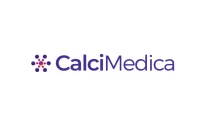A new technique may soon bring even more precision to interventional cardiology. Patients with known coronary lesions are being urged to undergo two additional tests before intervention. These diagnostic tools are Instant Wave-free ratio (iFR) and Optical Coherence Tomography (OCT), and they help cardiologist make important decisions like stent placement.
What are iFR and OCT?
iFR is a relatively new technique that measures pressure in an artery with a blockage. In doing so, it provides data that indicates the severity of the lesion. OCT provides a high-definition image of the interior of the vessel. Using these tools together, cardiologists can more accurate diagnose lesions that are critical. The advantages are clear:
- non-invasive – lower risk
- better overall decision making
- rules-in lesions for targeting
- decreases the incidence of unnecessary intervention
- more precise stent placement
- improves overall patient outcome
So, What Happened to FRR?
It wasn’t too many years ago that FRR or fractional flow reserve was go-to for pre-intervention planning. For over a decade interventional cardiologists were have been using image-guided therapies like FRR and OCT to assess suspected blockages in coronary arteries to diagnose, guide, and treat with the appropriate therapy. iFR seems to be next generation of physiologic diagnostics. It uses the same pressure guide wires and equipment as FFR but does not entail the administration of hyperemic agents; a requirement of FRR.
Findings from the DEFINE FLAIR and IFR Swedeheart trials were presented earlier this year at the 2017 American College of Cardiology’s Annual Scientific Session & Expo. The studies, which included 4,529 patients, combined to be the largest randomized coronary outcomes study in history, showed that at one-year, iFR group had better outcomes that the FRR group. Also, the iFR strategy was faster, delivered more consistent results, and provided a reduction in patient discomfort and cost.
The use of OCT and iFR together is somewhat of a novel approach here in the United States. However, physicians in countries like India have embraced this combination as a sort of one-two punch approach when evaluating lesions. It is particularly useful in recognizing lipid-rich plaques, which we discussed recently.
Email: ken@prime-core.com





